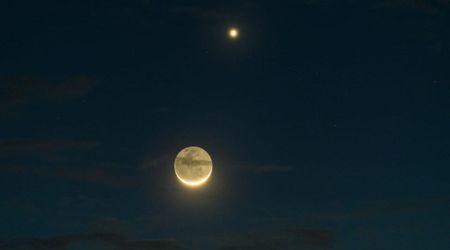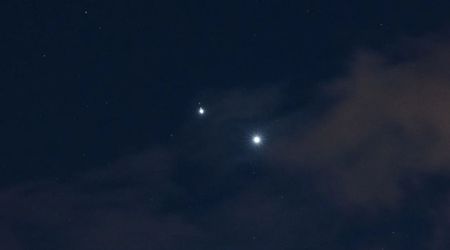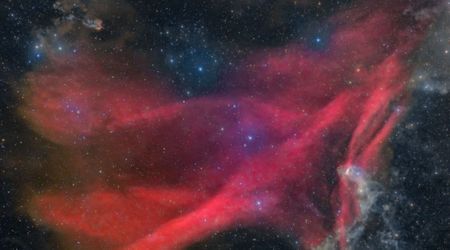Vera C. Rubin Observatory to debut its first ultra-high-definition images of the sky

The Vera C. Rubin Observatory is poised to release its inaugural images and videos on Monday, June 23, captured by the world's largest digital camera. These ultra-high-definition visuals will offer the first glimpse into the observatory's groundbreaking capabilities. For those wishing to witness this historic event from home, a live news conference will stream on YouTube in both English and Spanish at 11:00 a.m. EDT on Monday. The direct link to the stream is available on the observatory's official website, as reported on Live Science.
Get ready to join us virtually for #RubinFirstLook — the grand reveal of images from Rubin, and the first preview of what's to come over the next ten years as Rubin begins to #CaptureTheCosmos ✨
— NSF-DOE Rubin Observatory (@VRubinObs) June 17, 2025
🗓️: June 23, 2025
🕚: 11am US EDT
🔗: https://t.co/1a74X2edp8
Additionally, watch parties are scheduled globally at planetariums and universities, offering a communal experience to view the highly detailed imagery. The observatory has provided an interactive map of registered watch parties and an option for individuals to sign up as hosts for their events. The news conference will feature the Rubin Observatory team introducing the facility before presenting the new images and discussing their scientific significance. Local scientists and special guests may also participate in watch party events, with attendees advised to check specific programming details beforehand.
The countdown is on for the world's first look at images from the NSF-DOE Rubin Observatory on June 23, 2025, at 11 a.m. EDT. Experience the cosmos like never before. Join one of @VRubinObs watch parties: https://t.co/hwWO439OBo. #CaptureTheCosmos pic.twitter.com/VTDdGOeLwW
— U.S. National Science Foundation (@NSF) June 17, 2025
Perched high in the Chilean Andes, the Rubin Observatory is set to revolutionize our understanding of the cosmos. Its mission includes scrutinizing interstellar comets, potentially hazardous asteroids, and grander celestial phenomena such as twisting galaxies and exploding supernovas. At the heart of the observatory lies the world's largest digital camera, complemented by six of the largest optical filters ever produced. This cutting-edge combination allows researchers to observe various facets of the universe across multiple wavelengths of light, revealing details with unprecedented clarity.

The camera will capture a new high-resolution image of the sky approximately every 40 seconds. These images will then be swiftly transmitted via fiber optic cables to a supercomputer in California for analysis. When compiled, these individual snapshots will form a remarkable 10-year time-lapse video of space, offering a dynamic and long-term perspective of cosmic evolution. Beyond stunning visuals, the observatory's groundbreaking instruments are expected to significantly contribute to our current understanding of dark energy and dark matter. These two enigmatic components are believed to constitute a vast majority of the universe but remain largely unexplained.
Over 10 years, Rubin's Legacy Survey of Space and Time (LSST) will create the most detailed time-lapse view of the cosmos ever 🤯
— NSF-DOE Rubin Observatory (@VRubinObs) June 16, 2025
Each night, Rubin will scan the sky, capturing images with the LSST Camera, the largest digital camera ever built.
The observatory's ambitious goals weren't always so broad. Originally named the Large Synoptic Survey Telescope (LSST), its initial purpose was primarily to hunt for dark matter. The observatory now bears the name of Vera Rubin, the pioneering astronomer who, alongside her colleague Kent Ford, provided the first concrete evidence for dark matter in the 1970s. Rubin and Ford's groundbreaking discovery emerged from their studies of galactic dynamics. They observed that in spiral galaxies, stars in the outer regions moved at unexpectedly high speeds, comparable to those closer to the galactic core, despite the core having more visible mass and gravitational pull. This consistent pattern across dozens of galaxies defied conventional explanations, strongly suggesting the presence of an unseen, massive material — now known as dark matter — influencing the galaxies' rotation at their seemingly outer edges, as per Scientific American.
We're just 6 days away from revealing @NSF–@doescience Rubin Observatory's first images!
— NSF-DOE Rubin Observatory (@VRubinObs) June 17, 2025
And since we're counting down to #RubinFirstLook, here are some numbers to know 🔭 🔢
🧵 pic.twitter.com/Dst5E2MSbf
These forthcoming images could be the initial set in a series that profoundly enhances our comprehension of the cosmos. Whether you attend a public watch party to tune in from your home, these eagerly anticipated photos are an event not to be missed, per Live Science.









